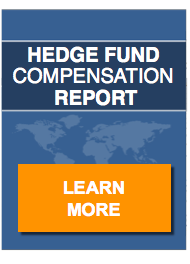The term, institutional investor, is broadly used in the hedge fund industry, but it is important that marketing professionals understand that institutional investors can be as different, one from another, as any two individuals. Insights into the unique character of each of these investment types can drive a targeted marketing campaign. To that end, let us explore the categories and sub-categories that define institutional investors because, in truth, the only common characteristic is their size, and their size gives them the unprecedented power to shape, not only markets, but the fate of your firm.
Pension Funds
Pension are the largest segment of institutional investors, wielding the clout of more than $36 trillion in assets under management (AUM) according to the 2017 Global Pension Asset Study. Unsurprisingly, roughly 62 percent of pension fund monies are held in the United States, followed by the United Kingdom, with 7.9 percent and Japan, with 7.1 percent.
However, there is substantial diversity within this category with no less than 4 sub-categories. These are, 1) national pensions, sponsored by a federal government, 2) corporate pensions, sponsored by either a single employer or, alternatively. a group of related employers, 3) public pensions, which are created on the behalf of federal, state and municipal employees, which offer a defined benefit for said employees upon retirement and, 4) union pensions, also known as Taft-Hartley plans in the United States, which are typically run by groups of companies in conjunction with the officials of the unions that represent their employees.
Insurance Companies
Premiums collected by insurance companies are not allowed to sit idly in an account, waiting patiently for a claim to be made by the insured. Rather, insurance companies invest the premiums they have been paid, which enhances their earnings. According to the Organization for Economic Co-operation and Development, global insurance company assets available for investment, exceed $23 trillion.
Insurers assume a variety of risks, all of which vary greatly in terms of predictability and timeframe. Obviously, these variables define the nature of the investment insurance companies will make.
For example, health insurance general accounts are characterized by predictable, but short term liabilities that require high liquidity. As one might expect, up to 25 percent of these monies are retained as cash to meet demands.
Conversely, life insurance general accounts, are characterized by long-term liabilities, which necessitate an investment in offsetting fixed-income instruments such as Treasuries and corporate bonds. Most managers of these general accounts face company policy prohibitions against holding large equity positions. As a result, one sees heavier investment in mortgages and other assets.
Lastly, we have the property and casualty general account managers. These managers face bumpy liability streams requiring that they retain as much as 10 percent of their assets in cash and around 70 percent in bonds. They typically invest the remaining 20 percent in a mix of equities and other assets to achieve long-term growth.
Warren Buffet built his reputation, in part, through the shrewd management of such a portfolio.
In Part 2, space permitting, we will highlight Sovereign Wealth Funds, Outsourced CIOs, Single Family Offices, Multi-Family Offices, Endowments and Foundations.


